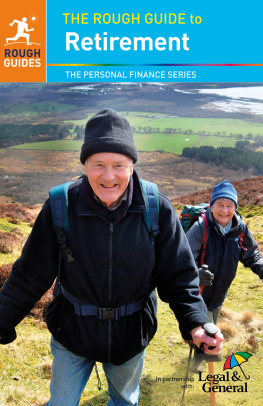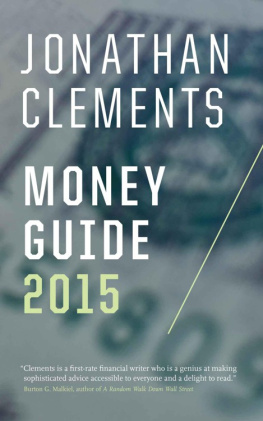Clements Paul - The rough guide to Ireland
Here you can read online Clements Paul - The rough guide to Ireland full text of the book (entire story) in english for free. Download pdf and epub, get meaning, cover and reviews about this ebook. City: London, Array, year: 2015, publisher: Rough Guides, genre: Home and family. Description of the work, (preface) as well as reviews are available. Best literature library LitArk.com created for fans of good reading and offers a wide selection of genres:
Romance novel
Science fiction
Adventure
Detective
Science
History
Home and family
Prose
Art
Politics
Computer
Non-fiction
Religion
Business
Children
Humor
Choose a favorite category and find really read worthwhile books. Enjoy immersion in the world of imagination, feel the emotions of the characters or learn something new for yourself, make an fascinating discovery.
- Book:The rough guide to Ireland
- Author:
- Publisher:Rough Guides
- Genre:
- Year:2015
- City:London, Array
- Rating:5 / 5
- Favourites:Add to favourites
- Your mark:
- 100
- 1
- 2
- 3
- 4
- 5
The rough guide to Ireland: summary, description and annotation
We offer to read an annotation, description, summary or preface (depends on what the author of the book "The rough guide to Ireland" wrote himself). If you haven't found the necessary information about the book — write in the comments, we will try to find it.
The rough guide to Ireland — read online for free the complete book (whole text) full work
Below is the text of the book, divided by pages. System saving the place of the last page read, allows you to conveniently read the book "The rough guide to Ireland" online for free, without having to search again every time where you left off. Put a bookmark, and you can go to the page where you finished reading at any time.
Font size:
Interval:
Bookmark:
This Rough Guide toIreland is one of a new generation of informative andeasy-to-use travel-guide ebooks that guarantees you make the most of yourtrip. An essential tool for pre-trip planning, it also makes a great travelcompanion when youre on the road.
From the section.
Detailed area maps feature in the guide chaptersand are also listed in the , accessible from the table of contents. Depending on yourhardware, you can double-tap on the maps to see larger-scale versions, orselect different scales. There are also thumbnails below more detailed maps in these cases, you can opt to zoom left/top or zoom right/bottom orview the full map. The screen-lock function on your device is recommendedwhen viewing enlarged maps. Make sure you have the latest software updates,too.
Throughout the guide, weve flagged up ourfavourite places - a perfectly sited hotel, an atmospheric caf, a specialrestaurant - with the author pick icon  . You can selectyour own favourites and create a personalized itinerary by bookmarking thesights, venues and activities that are of interest, giving you the quickestpossible access to everything youll need for your time away.
. You can selectyour own favourites and create a personalized itinerary by bookmarking thesights, venues and activities that are of interest, giving you the quickestpossible access to everything youll need for your time away.


Over the past three decades, Ireland has transformed itself withquiet determination. Gone or certainly on its way out is the image of aconservative, introspective, dourly rural nation, while the infamous unrest andviolence have, mercifully, faded away. An outward-looking Ireland has steppedforward, energized by rejuvenated cities no longer weighed down by the Troubles,where the fresh ideas introduced by immigrants and returnees during the Celtic Tigeryears of the 1990s are maturing nicely. Of course, its not called the Emerald Islefor nothing and Irelands physical appeal endures clear and true as a jewel butits by no means a blanket of green. From the Burrens grey limestone pavement andthe black peat bogs of the Midlands (where some of the prehistoric gold ornaments onshow in Dublins National Museum were dug up) to Connemaras gold- and purple-tingedmountains, Irelands smouldering even unnerving good looks can send a shiverdown your spine. And when the sun is shining the sky throbs bluer than anywhere elseon earth or so the Irish would have you believe.
While Dublin, Belfast and the other cities are cranking up the cosmopolitan fromhipster coffee shops to edgy, internationally relevant arts scenes theiron-message worldliness is not the be all and end all: traditionalculture is cherished by even the most city-slicking of the Irish.Moreover, as Northern Irish historian J. C. Beckett (191296) noted, his homelandhas no natural focal point, no great crossing-place of routes, no centre from whichinfluence spreads naturally. The lay of the land and the roadnetwork lend themselves to a democratic exploration, with each part ofthe country fair game, and youre unlikely to feel swallowed up by the citiesgravitational pull. In rural areas, switch modes towalking boots or two wheels (motorized or otherwise) and youll be in no great hurryto return to the urban sprawl, however vibrant.
In some areas public transport coverage fades to black,and you have no choice but to feel your way the perfect opportunity to get togrips with Irelands rich textures. The west coast isfamous for its long beaches and windswept cliffs with views of the western islands;the drama of the landscape here is awe-inspiring, not least to the surfers who flockto Donegal and Galway. In the east, outside Dublin, thecrumpled granite of the Wicklow Hills sits in stark contrast to the lush centralplain just a few kilometres away. Cross the border into Northern Ireland and it is a short journey through rolling hills known locally as drumlins to the spectacular coast road that leads to thegeological wonder of the Giants Causeway.
Scattered across these landscapes is an abundance of historicsites. The very earliest of these include enigmatic prehistoric tombs,stone circles and hill forts. It is possible to trace the history of successivewaves of immigration, whether Christian pilgrims, Viking raiders or Norman settlers,through the stone churches, distinctive round towers andhigh crosses strewn across the landscape. Irelands monasteries were important centres of Christian learning during theMiddle Ages, and the monks elaborate craftsmanship is preserved in survivingilluminated manuscripts, such as the Book of Kells, heldat Dublins Trinity College. Doughty castles and towerhouses record the twelfth-century Anglo-Norman invasion, while numerous stately homes from the eighteenth and nineteenth centuriesattest to the wealth and political power of the Protestant Ascendancy both north andsouth. A remarkable aspect of Irelands landscape is the tendency for physicalfeatures to have sacred associations few counties do notshelter a pile of stones called Diarmuid and Grinnes Bed, where the star-crossedlovers are said to have slept together on their flight from the great warrior FionnMac Cumhaill.
Inseparable from Irelands history is its cultural heritage, a happy comingtogether of millennia and myriad influences from home and abroad. Here you have therichest store of mythological traditions in northernEurope, folkloric associations at every turn and world-famous literature and poetry.But there are a couple of elements youll likely encounter in vivid form on a dailybasis particularly if youre a pub goer. First you have traditional music, with its ballads and sean-ns (old-style Irish-language singing) recounting tales oflove, history and humour. Then theres the craic, thetalking therapy of Irelands pubs, a combination of unlikely yarns, surreal comedyand plain old chatter and gossip. Dublin, which haslong enjoyed a reputation as a culturally rich city, remains the epicentre ofartistic activity. The Republics capital is justifiably proud of its literarytradition, which takes in (among countless other luminaries) Oscar Wilde, FlannOBrien and James Joyce, whose famously complex and experimental Finnegans Wake is besides its many other triumphs a worthyencapsulation of the sheer weightiness of Irish culture.
Ireland is rightly renowned for the welcome extended tovisitors, and the tourist sector is, unsurprisingly, at the centre of its plans forlasting economic recovery. Northern Ireland and Belfast, in particular, have takenfull advantage of the sudden influx of visitors previously deterred by the Troubles.What they will encounter is an Ireland where, finally, the past is significant forits cultural riches rather than the shadow it casts andwhere the future is all about that big blue sky.



Font size:
Interval:
Bookmark:
Similar books «The rough guide to Ireland»
Look at similar books to The rough guide to Ireland. We have selected literature similar in name and meaning in the hope of providing readers with more options to find new, interesting, not yet read works.
Discussion, reviews of the book The rough guide to Ireland and just readers' own opinions. Leave your comments, write what you think about the work, its meaning or the main characters. Specify what exactly you liked and what you didn't like, and why you think so.













